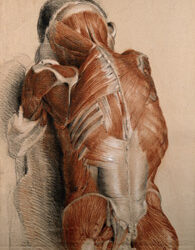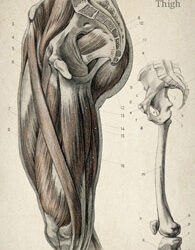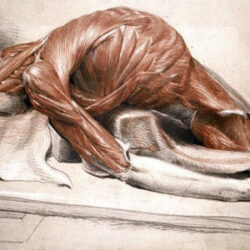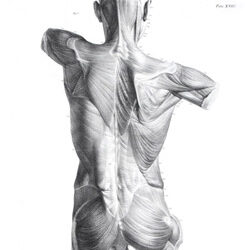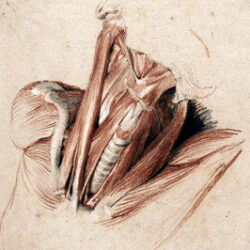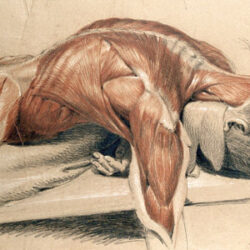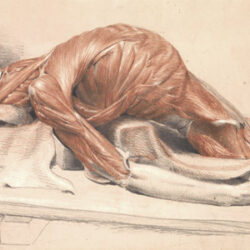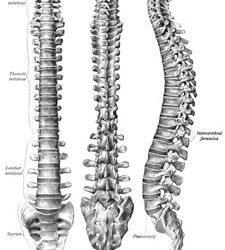Online Dissection and Biomechanics in Motion: Anatomy through the Lens of Zoga Movement®
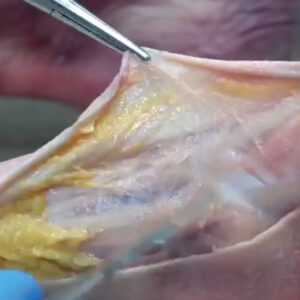
Course details:
Date: 14.09.2025, 12.10.2025, 16.11.2025
Hours: 18:00- 21:00
Teachers:
Wojciech Cackowski
Todd Garcia
Price: 620 pln /module
Detailed information:
+48 602 181 861, email: dominika@zoga-movement.com, magda@zoga-movement.com
Course information
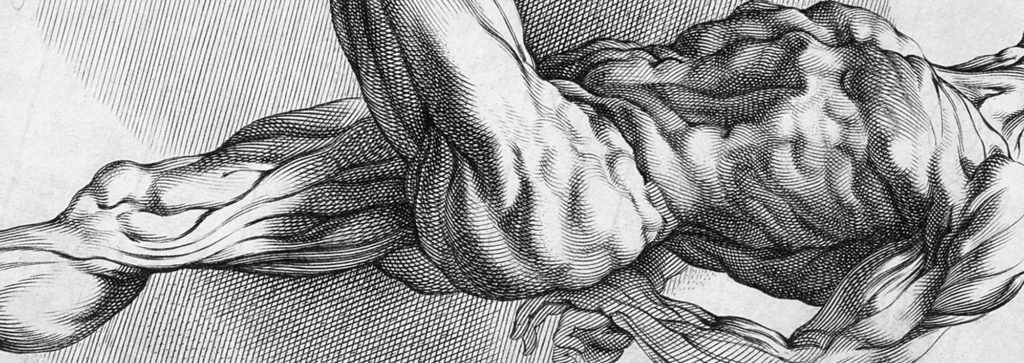
Online Dissection and Biomechanics in Motion: Anatomy through the Lens of Zoga Movement®
Transforming Anatomy and Movement: A Unique Opportunity to Connect Knowledge with Practice


Instructors: Todd Garcia i Wojtek Cackowski Date:
September 14, 2025, Sunday, Module I – Lumbar Pain October 12, 2025, Sunday, Module II – Pelvic Girdle Dynamics November 16, Sunday, Module III – Shoulder Girdle and Back Pain
Individual modules can be completed independently, but completing the full series of three modules provides a comprehensive understanding of the interconnections within the body, enabling more effective therapeutic work.
Location: Online training, 6:00 PM 9.00 PM CET (10:00 AM MST ) Price: PLN 620 for 1 module or PLN 1,581 for all 3 modules (15% discount), each session lasts 3 hours. More information: +48 602 181 861, email: dominika@zoga-movement.com, magda@zoga-movement.com
We present a unique training program that will change the way you understand the human body. This online anatomical training combines a real-time dissection of unembalmed cadavers with the practical biomechanical application of the Zoga Multidimensional Movement® concept.
You will have the exclusive opportunity to see how the human body truly works, experience the connection between anatomy and motion, and immediately apply this knowledge in your professional practice. Every muscle, nerve, joint, and fascial connection you observe will provide a new dimension of understanding the body and its dysfunctions.
This is not just another training. This is a step forward in how we perceive anatomy and its influence on movement.
What Makes This Training Truly Unique?
- Real-Time Dissection on Unembalmed Cadavers:
Witness the authentic layers of the human body – muscles, nerves, ligaments, bones, and fascial connections in their natural state.
- Biomechanics in Practice:
Through Zoga Multidimensional Movement®, you will gain an immediate understanding of how each anatomical structure impacts movement and posture.This session will be led by the founder of the concept himself, Wojtek Cackowski.
- Interactive Learning:
Dive deep into the human body, identify biomechanical relationships, and immediately apply your newfound insights when working with clients.
- Unique Training Structure:
Divided into three modules, this course takes you through the body from different positions to provide a comprehensive and practical perspective.
See – Experience – Apply
See
Through real-time online dissection of unembalmed cadavers, observe the actual layers of the body and how they connect – from surface structures to the deepest stabilizing systems.
Experience
Zoga® is an innovative movement concept that combines modern biomechanics with a practical approach to optimizing motion and restoring natural balance. Each body structure – muscles, tendons, fascia, and joints – is interconnected and responds to forces such as gravity and external pressure. This method enables you to precisely target specific anatomical layers, improving posture, functionality, and resilience against dysfunction.
Apply
Immediately integrate these insights into your practice. Learn targeted approaches to resolve movement dysfunctions and address client needs effectively.
All sessions last 3 hours, 6:00 PM – 9:00 PM. Copying, downloading, replaying, or screenshots are strictly prohibited during the session. Section modules will not be available in playback mode. Watching section modules with multiple participants is also prohibited. This training is intended for intellectually mature individuals and includes images of human cadavers. Due to the nature of the session, each participant will be asked to complete and return an “intellectual property rights agreement,” which will be sent to the address provided after registration.
The training is conducted in English, with the option to select a translation. 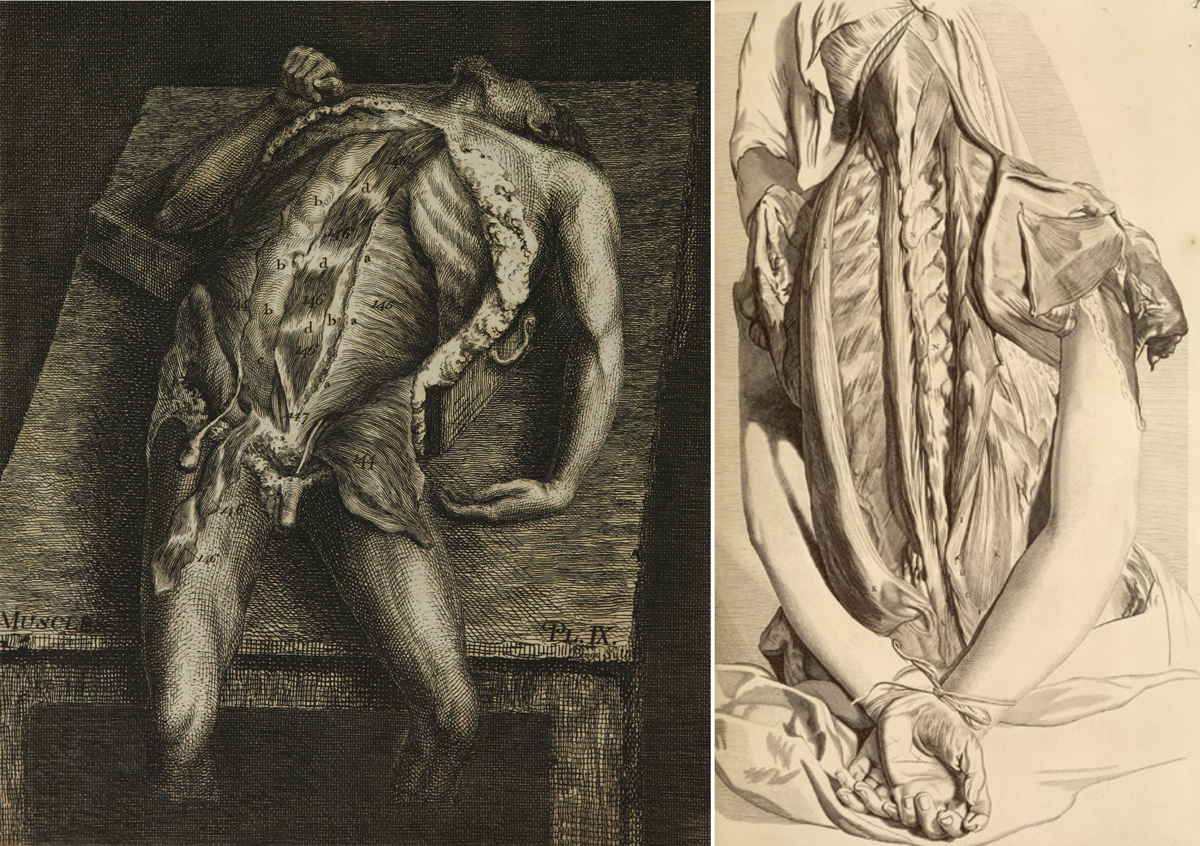
Class Schedule
Each module lasts 3 hours.
Low Back Pain
Overview:
The first module offers an unparalleled opportunity to explore and understand the deep anatomical structures of the body from multiple positions: supine (on the back), side-lying, and prone (on the front). This dynamic and multi-angled approach is designed to provide a comprehensive view of core stability, biomechanical relationships, and functional movement patterns.
- Supine Position (on the back):
- Side-Lying Position (on the side):
- Prone Position (on the front):
By combining real-time dissection of unembalmed cadavers with the practical application of Zoga Multidimensional Movement®, this module bridges the gap between theoretical anatomy and functional biomechanics.
Anatomical Exploration: What Will You See and Experience?
Supine Position (on the back):
- Anterior rectus sheath & Semilunar line – Key stabilizers of the abdominal wall essential for core integrity and force distribution.
- External and Internal abdominal oblique muscles – Critical for rotational control and lateral trunk stability; dysfunction often causes asymmetries and back pain.
- Transversus abdominis & Parietal peritoneum – The “internal corset,” regulating intra-abdominal pressure and spinal support.
- Abdominal aorta – The body’s primary arterial pathway, vital for understanding blood flow and systemic connections.
- Psoas major muscle – A deep stabilizer influencing lumbar alignment and pelvic mobility; crucial for addressing lower back pain.
- Iliolumbar ligament – Connects the spine and pelvis, maintaining structural integrity under stress.
- Nervous pathways:
- Iliohypogastric, Ilioinguinal, Genitofemoral, and Lateral femoral cutaneous nerves – Essential for sensory-motor function in the abdomen, groin, and thighs. Lumbosacral trunks & Ventral surface of lumbar vertebrae – Key to spinalstability and neural connections, offering insights into lumbar function.
Side-Lying Position (on the side):
- Latissimus dorsi muscle & Thoracolumbar aponeurosis – Explore their stabilizing role in spinal and shoulder function.
- Posterior cutaneous branches of spinal nerves – Sensory pathways critical to back tension and discomfort.
- Superior cluneal nerves – Often overlooked contributors to lower back and hip dysfunction.
- Erector spinae muscles (lumbar region) – The primary extensors and stabilizers of the lumbar spine.
- Quadratus lumborum – A core lateral stabilizer; its dysfunction affects posture, spinal mobility, and breathing.
Prone Position (on the front):
- Multifidus muscle (lumbar region) – Deep spinal stabilizers essential for segmental control and preventing instability.
- Rotatores muscles (lumbar region) – Small but vital muscles for rotational alignment of the vertebrae.
- Intervertebral discs (lumbar region) – Key to shock absorption, movement flexibility, and spinal health.
- Lumbar vertebral body (cancellous bone) – Understand its internal structure and role in weight-bearing.
- Sacroiliac joint – A central connection influencing pelvic stability and lower body movement.
Why Is Module 1 Essential?
This module takes you far beyond textbook anatomy, offering a functional understanding of how deep anatomical structures interact and influence movement. Through the Zoga Movement® approach, you will:
- Identify and release tensions in critical stabilizing areas.
- Enhance spinal and pelvic stability, addressing common sources of lower back pain.
- Improve movement patterns by understanding the interplay between nerves, muscles, and fascial layers.
With the relative motion concepts of Zoga Movement®, you will experience how targeted interventions in one region can influence the body’s entire biomechanics.
What You Will Take Away:
- A profound understanding of core anatomical structures and their biomechanical relevance.
- Practical tools to identify, address, and resolve movement dysfunctions.
- A new perspective on functional anatomy and motion that you can immediately apply in your professional practice.
See – Experience – Apply
Pelvic Girdle Dynamics in Relation to Low Back Pain & Integration Through Zoga Movement®
Overview:
Following the foundational exploration of core stability in Module 1, Module 2 takes a comprehensive dive into the pelvic girdle—a key structural and functional bridge between the spine and lower limbs. This module continues to unravel the complexities of Low Back Pain, emphasizing how pelvic mechanics influence lumbar stability, movement patterns, and chronic dysfunctions.
Participants will witness a real-time dissection of unembalmed cadavers, gaining unparalleled anatomical insights, while simultaneously engaging in Zoga Movement® sequences to experience firsthand how these structures function in motion. This integration bridges theoretical knowledge with practical application, offering tools to address both acute and chronic musculoskeletal issues.
Module 2: Pelvic Girdle Dynamics in Relation to Low Back Pain & Integration Through Zoga Movement®
Anatomical Exploration: What Will You See and Experience?
1. Bony Structures:
- Sacrum and Coccyx: Understanding the keystone role of the sacrum in load transfer between the spine and pelvis, and its connection to sacroiliac joint stability.
- Ilium, Ischium, Pubis (Innominate Bones): Visualizing the pelvic ring and how asymmetries in these bones affect posture and gait.
- Acetabulum and Hip Joint Articulations: Key for understanding hip mobility and its impact on lumbar mechanics.
- Sacroiliac Joints: Exploring their ligamentous support, stability under load, and role in force transmission.
2. Ligamentous Structures:
- Sacrotuberous and Sacrospinous Ligaments: Critical for pelvic stability; restrictions here often contribute to sciatic-like symptoms.
- Iliolumbar Ligament: Linking the lumbar spine to the pelvis, crucial in maintaining lumbopelvic integrity.
- Anterior and Posterior Sacroiliac Ligaments: Stabilizers of the sacroiliac joint, often involved in low back and pelvic pain syndromes.
- Inguinal Ligament: Serves as a landmark for neurovascular structures and plays a role in pelvic alignment.
3. Muscular System:
- Deep Core Muscles:
- Iliopsoas Complex (Psoas Major, Iliacus): Dual role in hip flexion and lumbar stabilization; hypertonicity here often mimics or contributes to back pain.
- Quadratus Lumborum: A key lateral stabilizer affecting lumbar curvature and pelvic tilt.
- Multifidus and Rotatores (Lumbosacral Region): Deep spinal stabilizers essential for segmental control.
- Gluteal Group:
- Gluteus Maximus: Power generator for hip extension and external rotation, with fascial connections influencing the lumbar spine.
- Gluteus Medius and Minimus: Lateral stabilizers critical for pelvic alignment during gait and single-leg activities.
- Pelvic Floor Muscles:
- Levator Ani (Pubococcygeus, Iliococcygeus) & Coccygeus: Often overlooked in back pain discussions, yet central to core stability and intra-abdominal pressure regulation.
- Hip Rotators:
- Piriformis: Its proximity to the sciatic nerve makes it a key player in pelvic and lower limb dysfunctions.
- Obturator Internus/Externus, Gemelli, Quadratus Femoris: Stabilize the hip and influence sacroiliac mechanics.
4. Fascial Connections:
- Thoracolumbar Fascia: A central tension hub connecting the upper and lower body; influences spinal stability and force distribution.
- Iliotibial Band (ITB): Understanding its role beyond the hip and knee, as part of the lateral fascial line affecting pelvic alignment.
- Perineal Fascia and Abdominal Fascial Layers: Their tension relationships impact pelvic floor function and core stability.
Integration Through Zoga Movement®
While observing the dissection, participants will simultaneously engage in Zoga Movement®
sequences designed to:
- Demonstrate the functional relevance of each dissected structure through guided movement.
- Explore fascial tension patterns and how they influence pelvic alignment and spinal mechanics.
- Apply relative motion concepts to understand how addressing restrictions in one area can have systemic effects on posture and movement.
- Experience biomechanical corrections in real-time, observing how subtle adjustments can release tension, improve range of motion, and enhance stability.
Led by Wojtek Cackowski, Zoga Movement® founder, these sessions transform passive observation into an active, embodied experience. You won’t just learn what the structures are— you’ll feel how they function.
Why Is Module 2 Essential?
- Provides an in-depth look at the pelvic-lumbar connection, a key region in most cases of chronic low back pain.
- Teaches how to identify and address structural imbalances through both manual and movement-based interventions.
- Enhances clinical reasoning by integrating anatomical knowledge with functional biomechanics.
- Offers tools for immediate application in therapeutic settings, whether with clients or for self-care.
Who Should Attend?
- Manual Therapists
- Physiotherapists
- Movement Specialists
- Sports Therapists
- Health and Wellness Professionals
This module is part of a 3-part series, though each module can be attended independently. However, completing all three offers the most comprehensive understanding of the complex interrelationships within the human body.
Shoulder Girdle Dynamics in Relation to Low Back Pain & Integration Through Zoga Movement®
Overview:
After establishing the foundations of core stability in Module 1 and exploring the pelvic girdle dynamics in Module 2, Module 3 shifts focus to the shoulder girdle—an often-overlooked contributor to chronic Low Back Pain. While many therapeutic approaches concentrate on the lumbar region and pelvis, the upper body’s role in postural stability, force transmission, and compensatory patterns is critical for both understanding and resolving complex dysfunctions.
This module offers a great opportunity to witness real-time dissection of unembalmed cadavers, providing an authentic view of the anatomical structures involved in upper body mechanics. However, what truly sets this training apart is the integration of Zoga Movement®, allowing participants to not only see the anatomy but also experience how these structures behave in motion.
You will explore how restrictions, imbalances, or compensations in the shoulder girdle, thoracic spine, and cervical region can have cascading effects, contributing to dysfunctional movement patterns and persistent low back pain. The shoulder girdle’s relationship with breathing mechanics, fascial tension lines, and neurological pathways will be highlighted to provide a holistic perspective on movement and stability.
This module is not just about the upper body—it’s about understanding the global interconnectivity of the body and how addressing seemingly distant structures can create profound changes in function, mobility, and pain resolution.
Module 3: Shoulder Girdle Dynamics in Relation to Low Back Pain & Integration Through Zoga Movement®
Anatomical Exploration: What Will You See and Experience?
1. Bony Structures:
- Clavicle (Collarbone): Structural bridge between the axial skeleton and the upper limb, influencing thoracic and cervical mechanics.
- Scapula (Shoulder Blade): Dynamic stabilizer, crucial for upper body mobility and postural control.
- Humerus (Upper Arm Bone): Articulations at the glenohumeral joint affect both the neck and lower back.
- Sternum and Rib Cage: Connect to breathing mechanics and thoracic spine mobility; indirectly affect lumbar stability.
- Thoracic Vertebrae (T1–T12): Thoracic stiffness or hypermobility influences lumbar compensation patterns.
2. Ligamentous Structures:
- Acromioclavicular and Coracoclavicular Ligaments: Provide shoulder joint integrity; instability leads to spinal tension.
- Glenohumeral Ligaments: Stabilize the joint while allowing wide motion.
- Costovertebral and Costotransverse Ligaments: Rib-to-spine connectors; crucial for thoracic mobility.
- Sternoclavicular Ligament: Base stabilizer for shoulder complex; influences head and neck posture.
3. Muscular System:
- Rotator Cuff (Supraspinatus, Infraspinatus, Teres Minor, Subscapularis): Shoulder stabilizers with fascial connections to the spine.
- Serratus Anterior: Enables scapular mobility; dysfunction may cause lumbar extension compensation.
- Rhomboids & Levator Scapulae: Affect shoulder and neck tension.
- Trapezius (Upper, Middle, Lower Fibers): Bridges cervical spine, thorax, and shoulder; involved in posture.
- Pectoral Muscles (Major & Minor): Affect breathing, thoracic outlet, and upper body alignment.
- Latissimus Dorsi: Connects shoulder girdle to lumbar spine; links upper and lower body.
- Deep Cervical Flexors and Extensors: Key to head posture and spinal alignment.
4. Fascial Connections:
- Superficial and Deep Fascial Layers: Restrictions affect spinal mechanics.
- Brachial Fascia: Runs neck to arm; impacts movement strategy.
- Anterior and Posterior Fascial Lines: Tension continuity from head to pelvis.
- Sternal and Costal Fascial Attachments: Influence breathing and thoracic mobility.
Integration Through Zoga Movement®
As you observe the dissection, you will actively participate in Zoga Movement® sequences designed to:
- Demonstrate how upper body mechanics influence spinal alignment and lumbar stability.
- Explore the relationship between breathing, thoracic mobility, and low back pain.
- Apply fascial tension release techniques to improve upper body mobility and reduce compensatory patterns in the lower back.
- Understand the global impact of shoulder positioning on pelvic mechanics and gait patterns.
Guided by Wojtek Cackowski, Zoga Movement® founder, these practical sessions ensure that anatomical insights translate into real-world applications for both personal movement practices and client interventions.
Why Is Module 3 Essential?
- Reveals the hidden connections between shoulder mechanics and chronic low back pain.
- Teaches strategies to identify and correct postural compensations originating from upper body dysfunctions.
- Enhances clinical skills by integrating anatomical dissection with functional biomechanics.
- Provides tools for addressing complex pain syndromes through a whole-body approach.
Who Should Attend?
- Manual Therapists
- Physiotherapists
- Movement Specialists
- Sports Therapists
- Health and Wellness Professionals
While this module can be attended independently, completing the full 3-part series offers a comprehensive understanding of the body’s interconnected systems, empowering you to address dysfunctions from a truly holistic perspective.
Technical Requirements
A good quality internet connection, speakers, and a microphone. Download the latest version of Zoom software (https://zoom.us/download) and the latest update. Ensure a quiet and comfortable viewing environment.



